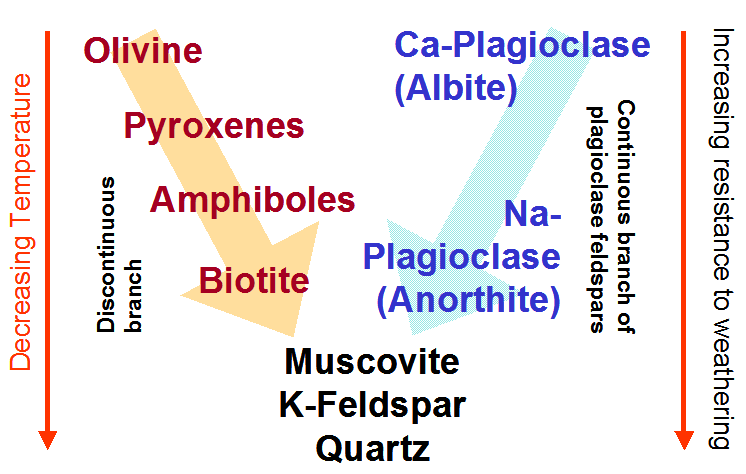-
Home
-
Quizzes
-
Module 1
Introduction
Earth's Interior
Earth's Oceans
-
Module
2
Plate Tectonics
Mountain Building
Geological Structures
Earthquakes
Measuring Geologic Time
-
Module
3
Evolution through Time
Atoms, Elements and Minerals
Volcanism and the Extrusive
Rocks
Intrusive Activity and the
Igneous Rocks
Weathering and Soil
Mass Wasting
-
Module
4
Sediments and
Sedimentary Rocks
Metamorphism and the
Metamorphic Rocks
Streams and Landscapes
Underground Water
Deserts and Wind Action
-
Module
5
Glaciers
Waves, Beaches and the Coasts
Earth Resources
Environmental Matters
|
|
Weathering and Soil
|
|
-
Quizzes
etc:
Information on Quiz-3,
Test-3 and other Quizzes, Tests, Class Meetings, Final Examination
-
Video Episodes:
-
Video Study Guide:
Weathering and Soil
Click on the title to access
and download this MS word document
|
| |
|
|
|
| |
|
| |
|
| |
|
|
|
|
 |
3 |
Read about chemical
weathering of rocks at this USGS website
and visit the site
http://wrgis.wr.usgs.gov/docs/parks/misc/gweaero.html
to learn
of the difference between weathering and erosion. |
| |
|
|
|
|
Weathering
EROSION is the physical removal
of weathered material.
TRANSPORTATION is the moving of eroded material by
wind, streams, waves, glaciers etc.
-
MECHANICAL WEATHERING (i.e., physical disintegration)
-
results from cosmic radiation, tides, frost action, abrasion and/or
pressure release, and
-
causes jointing (block, sheet, exfoliation, columnar etc.)
-
CHEMICAL
WEATHERING (i.e., chemical decomposition)
-
results from
the
chemical action of water solvents,
and
-
causes chemical and mineralogical changes, e.g., iron/aluminum oxides,
caverns, stalag-mites and stalactites, clay minerals etc.
-
Silica (or
the mineral quartz) is the most resistant of all minerals to weathering and
therefore forms the beach sands.
|
Two examples of mechanical
weathering in granite. Bottom picture shows spheroidal weathering and
the one on the right shows how the weathering along isometric
joint planes has left huge boulders resting over one another in the
Joshua Tree National Park.
|
 |
 |
Indeed, looking at Bowen's Reaction Series shown on the right, note that
minerals that are the last to form also resist weathering the most. This
is because minerals are most stable at the pressure and temperature
conditions at which they form. For instance, olivine and pyroxenes form
at high temperatures. At the atmospheric pressure and temperature
conditions, therefore, they also succumb the fastest to weathering.
Quartz, on the other hand, is the last mineral to form in Bowen's
Reaction Series. Little surprise, then, that it also withstands
weathering the most.
|
 |
|
Soil
-
Soil is the
weathered, unconsolidated, top part of rock, often rich in organic matter
and therefore suitable for plant growth (lunar soil is called regolith).
Click on this map or go to
http://www.essc.psu.edu/soil_info/soil_land/us_soil_surveys and
browse an interactive map of U.S. soil surveys
-
Soil forms
through loosening of particles, leaching by down-ward percolating water, and
accumulation of clay minerals, iron oxides, calcite at the bottom of the
weathered zone, while the top of bedrock defines the depth to which
weathering has progressed.
|
 |
|
-
Soil
can be
-
pedalfer,
pedocal, lateritic, and/or
bauxitic,
depending on temperature and humidity (e.g., compare the calcium rich pedocal
soil of the rather dry
western U.S.
with the aluminum and
iron rich
pedalfer soil of relatively humid temperate latitudes in the eastern U.S.
and Pacific northwest)
-
arnacious (sandy), argillaceous (clayey) and/or calcarious (loam),
depending on the mineral and/or composition.
|
 |
|




